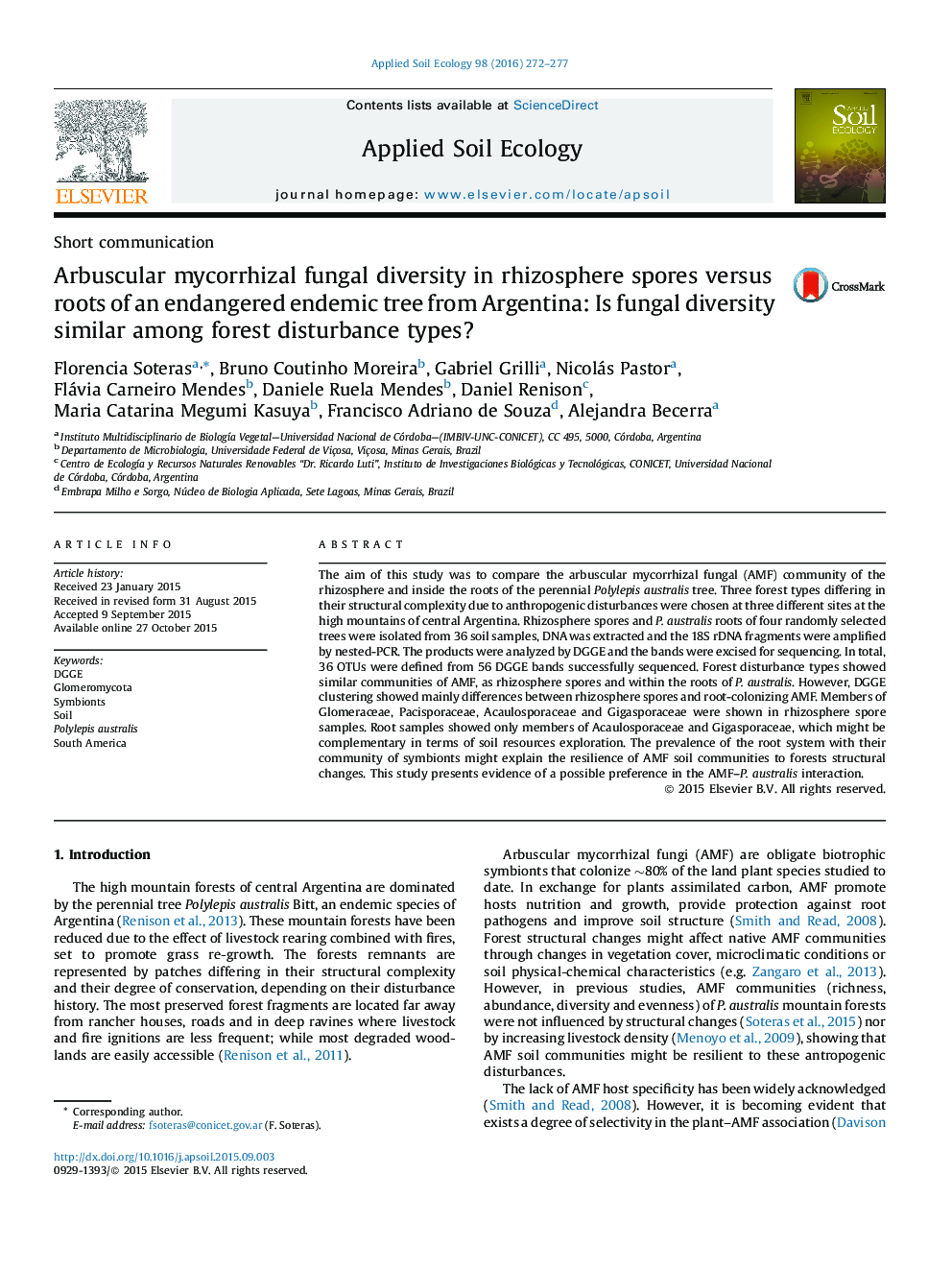| Article ID | Journal | Published Year | Pages | File Type |
|---|---|---|---|---|
| 4381879 | Applied Soil Ecology | 2016 | 6 Pages |
•Rhizosphere and root-colonizing arbuscular mycorrhizal fungi were identified.•DGGE banding profiles did not show differences among forest structural types.•Root-colonizing community showed two mycorrhizal families of the four recorded.•A possible preference in the fungi–Polylepis australis interaction was evidenced.
The aim of this study was to compare the arbuscular mycorrhizal fungal (AMF) community of the rhizosphere and inside the roots of the perennial Polylepis australis tree. Three forest types differing in their structural complexity due to anthropogenic disturbances were chosen at three different sites at the high mountains of central Argentina. Rhizosphere spores and P. australis roots of four randomly selected trees were isolated from 36 soil samples, DNA was extracted and the 18S rDNA fragments were amplified by nested-PCR. The products were analyzed by DGGE and the bands were excised for sequencing. In total, 36 OTUs were defined from 56 DGGE bands successfully sequenced. Forest disturbance types showed similar communities of AMF, as rhizosphere spores and within the roots of P. australis. However, DGGE clustering showed mainly differences between rhizosphere spores and root-colonizing AMF. Members of Glomeraceae, Pacisporaceae, Acaulosporaceae and Gigasporaceae were shown in rhizosphere spore samples. Root samples showed only members of Acaulosporaceae and Gigasporaceae, which might be complementary in terms of soil resources exploration. The prevalence of the root system with their community of symbionts might explain the resilience of AMF soil communities to forests structural changes. This study presents evidence of a possible preference in the AMF–P. australis interaction.
